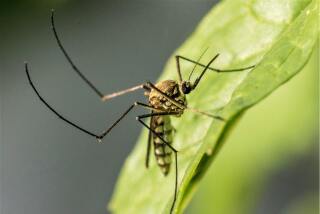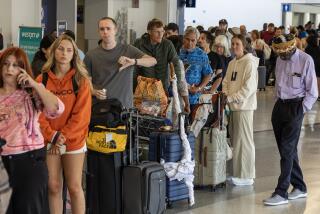STD cases reaching all-time highs in U.S., California
Much to the worry of public health officials, new data show that cases of chlamydia, gonorrhea and syphilis in California have reached an all-time high.
A report released this week from the U.S. Centers for Disease Control and Prevention shows that rates of these three sexually transmitted diseases have been steadily increasing in the state since 2010, while national rates sometimes stayed flat or even fell. In 2014, the rates for the diseases were higher in the Golden State than in the nation overall.
Nationally, rates of these three diseases have fluctuated over the last five years, but all three surged in 2014. The center called the increases “alarming.”
“America’s worsening STD epidemic is a clear call for better diagnosis, treatment and prevention,” said Dr. Jonathan Mermin, director of the CDC’s National Center for HIV/AIDS, Viral Hepatitis, STD, and TB Prevention.
The volume of chlamydia cases last year was particularly staggering. Nationwide, there were about 1.4 million cases, which is the highest number of annual cases of any condition ever reported to the CDC.
The new data also show that among the more than 3,000 counties in the nation, Los Angeles County had the most cases of all three diseases in 2014. That’s partly because it’s home to more people than any other county.
NEWSLETTER: Get the day’s top headlines from Times Editor Davan Maharaj >>
In 2014, there were 456 cases of chlamydia in the U.S. per 100,000 people, compared with 460 cases in California and 548 cases in L.A. County. The nation saw 111 cases of gonorrhea per 100,000 people that year, compared with 119 cases in the state and 153 cases in the county. The county’s cases of primary and secondary syphilis were double the U.S. rate, with six cases in the nation per 100,000 people, 10 cases in the state and 12 cases in L.A. County.
Compared with other states, California had the 22nd-highest rate of chlamydia, the 15th-highest rate of gonorrhea and the fourth-highest rate of primary and secondary syphilis.
According to state data, L.A. County’s rates of chlamydia and gonorrhea are among the top six of the state’s 58 counties. San Francisco, Kern and Fresno counties have higher rates of both diseases.
“STDs are a substantial health challenge facing the United States,” a CDC report summary says. “Each of these infections is a potential threat to an individual’s immediate and long-term health and well-being.”
Chlamydia and gonorrhea are common and curable diseases, but if not treated can cause serious problems such as infertility in women. Officials estimate that undiagnosed STDs cause 20,000 women in the country to become infertile each year.
More than half of chlamydia and gonorrhea cases occur among people ages 15 to 24. Officials recommend that sexually active women younger than 25 be tested annually for these diseases.
Syphilis, which is also curable, can lead to complications such as blindness if allowed to progress. It has been of particular concern recently in California, where early cases of the sexually transmitted disease among women more than doubled from 248 to 594 from 2012 to 2014.
That has led to a worrisome increase in cases of congenital syphilis, in which a mother infects her child during pregnancy. From 2012 to 2014, those cases shot up dramatically to 100 from 30. Most of the congenital cases occurred in Los Angeles County and the Central Valley, according to state health officials.
Stillbirths caused by syphilis in California also rose, to six cases in 2014 from one case in 2012.
Health officials recommend using condoms during sex to prevent the spread of these diseases.
Follow @skarlamangla on Twitter for more health news.
ALSO
Medi-Cal cancer patients don’t fare much better than the uninsured, UC Davis study says
Divorced couple’s frozen embryos must be ‘thawed and discarded,’ judge rules
Pentagon study links prescription stimulants to military PTSD risk
More to Read
Sign up for Essential California
The most important California stories and recommendations in your inbox every morning.
You may occasionally receive promotional content from the Los Angeles Times.











